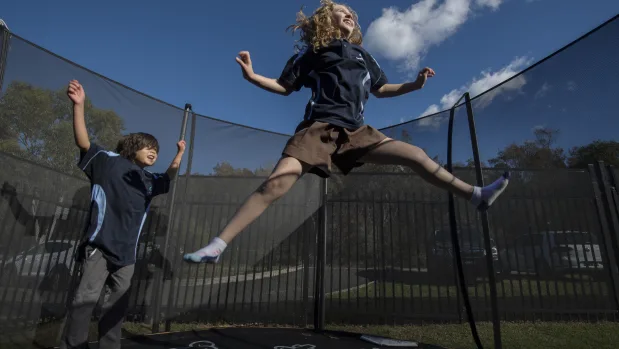Mini trampolines, typically associated with physical activity and fun, have proven to be versatile tools for incorporating educational elements into play. The joyous bouncing experience can be transformed into a platform for learning, creating a dynamic and engaging environment for kids. In this article, we will explore a variety of educational activities designed for mini trampolines, showcasing how learning through bouncing can enhance motor skills, cognitive abilities, and overall educational development in children.
- Counting Jumps:
- Turn bouncing into a counting exercise by encouraging kids to count their jumps. For example, ask them to count each jump aloud or challenge them to reach a specific number of jumps. This activity not only enhances counting skills but also introduces concepts of numerical sequencing and basic arithmetic.
- Alphabet Bouncing:
- Create an interactive alphabet game by placing letter cards or images on the trampoline surface. As children bounce, call out a letter, and ask them to find and land on the corresponding letter on the trampoline. This activity combines physical movement with letter recognition, fostering early literacy skills.
- Shape Hopping:
- Introduce geometric shapes by placing cutouts or drawings of shapes on the trampoline. Children can hop from one shape to another, identifying and naming each shape as they land on it. This activity promotes shape recognition, spatial awareness, and coordination.
- Color Coordination:
- Incorporate a burst of color into bouncing activities by using colored markers or tape to create a pattern of colors on the trampoline. Call out a color, and children must bounce and land on a spot of the specified color. This activity enhances color recognition and reinforces the association between colors and movements.
- Spelling Relay:
- Transform bouncing into a spelling challenge by organizing a spelling relay. Divide words into syllables or letters and place them around the trampoline. Children take turns bouncing to the different stations, spelling out words as they go. This activity combines physical activity with spelling practice.
- Math Facts Jump:
- Reinforce math facts by creating a mini trampoline (https://leotoystore.com/collections/mini-trampoline-for-kids) math station. Attach math problems or equations to the trampoline surface, and children must solve the problems as they bounce. This interactive approach to learning math makes practicing addition, subtraction, multiplication, and division more engaging.

- Word Recognition Jump:
- Boost sight word recognition by placing sight word cards on the trampoline. As children bounce, call out a sight word, and they must locate and land on the corresponding word. This activity aids in reinforcing sight word memorization and reading fluency.
- Geography Bouncing:
- Explore geography by creating a mini trampoline map. Attach images or labels of countries, states, or landmarks to the trampoline, and ask children to bounce to a specific location when called out. This activity introduces geography concepts while promoting movement and exercise.
- Rhyming Challenge:
- Enhance phonemic awareness with a rhyming challenge. Place rhyming word pairs on the trampoline, and children must identify the rhyming words as they bounce. This activity encourages auditory discrimination and reinforces understanding of rhyming patterns.
- Story Sequencing:
- Foster storytelling skills by incorporating a story sequencing activity. Create story segments or images and place them in random order on the trampoline. As children bounce, they must rearrange the segments to retell the story in the correct sequence, promoting narrative skills and creativity.
Learning through bouncing on mini trampolines adds an exciting dimension to educational activities for kids. By integrating movement with academic concepts, these activities create a dynamic and multisensory learning experience. From counting and spelling to geography and storytelling, mini trampolines prove to be versatile tools that not only promote physical fitness but also enhance cognitive development and academic skills in a playful and enjoyable manner. As parents, educators, and caregivers explore the educational potential of mini trampolines, they open up new avenues for interactive and engaging learning experiences for children.